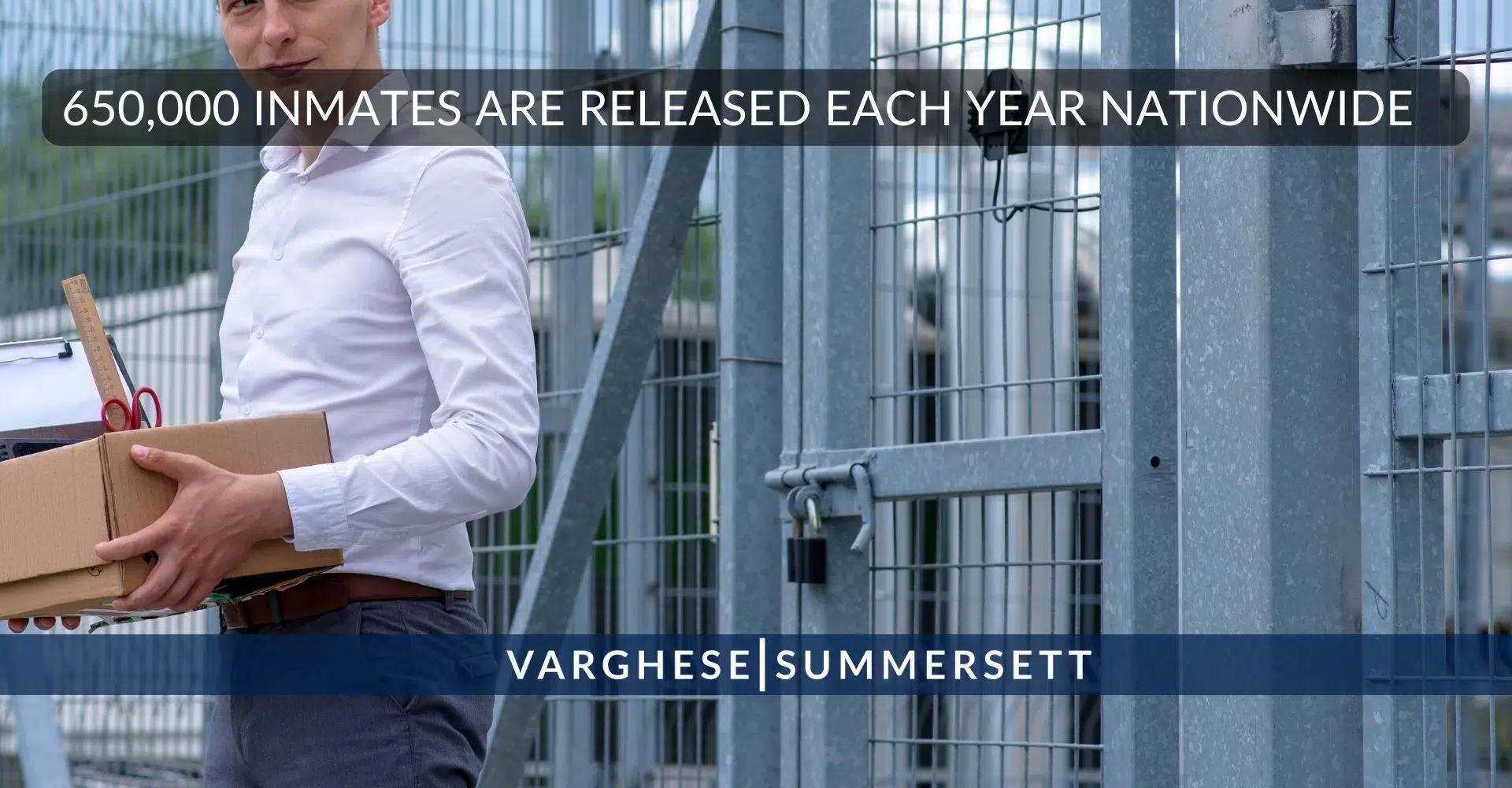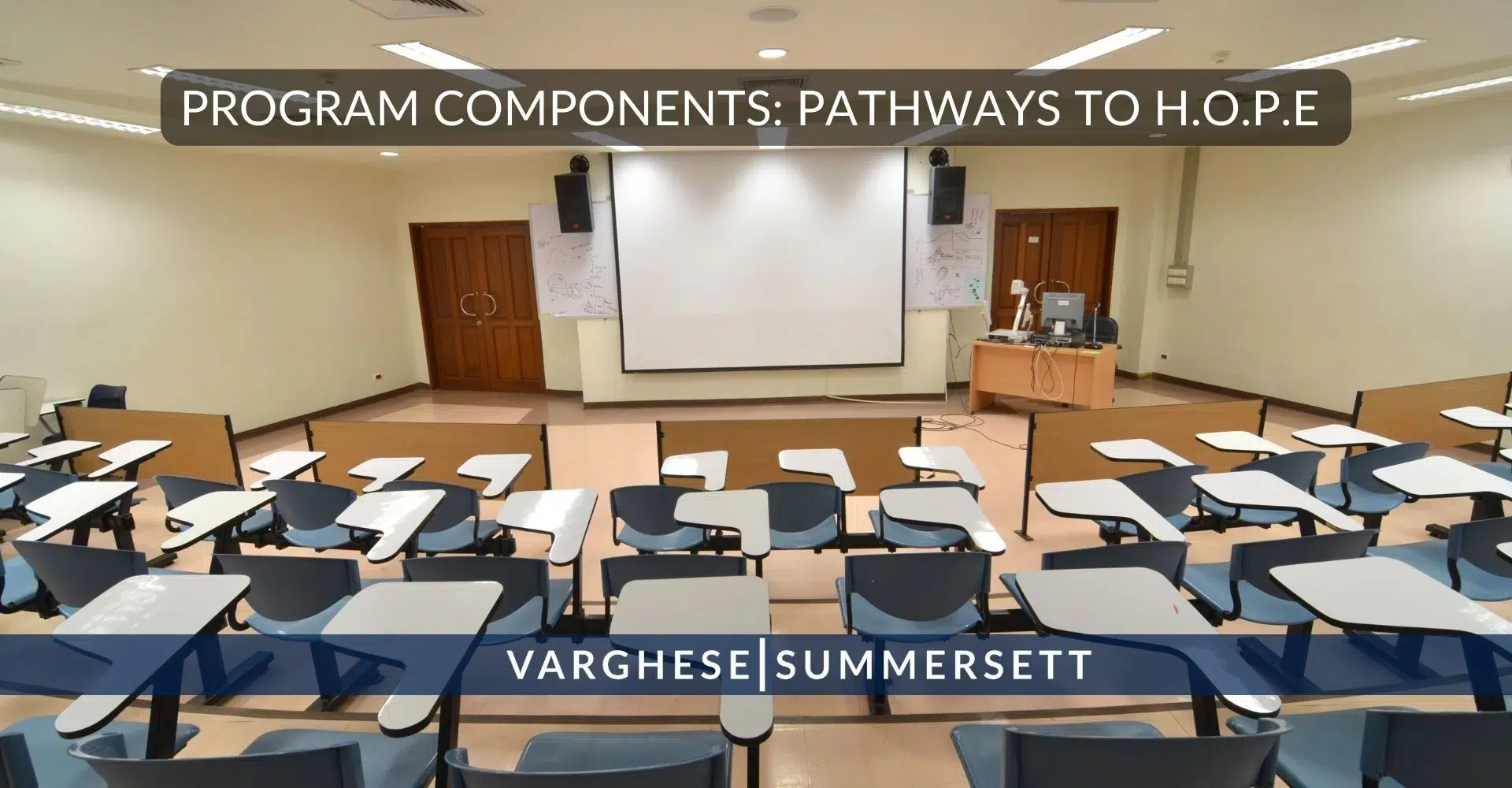Pathways To HOPE: Reentry Program For Life After Jail
When Tarrant County inmates are locked up, finding something positive in a negative situation is often difficult. But there is hope for those who want to better themselves while behind bars and come out stronger on the other side.
The Tarrant County Sheriff’s Office, in partnership with the non-profit One CommunityUSA, offers a program called Pathways to HOPE (Helping Offenders Pursue Excellence) to help inmates successfully reintegrate into society upon release from jail. The primary goal is to help inmates learn new skills and find housing and jobs after incarceration so they don’t return to old habits and end up back in custody.
In this article, we give an overview of the program, including how it started, the criteria, and the expected results. This video by WFAA Channel 8 provides an excellent overview of the Pathways to H.O.P.E. program.
The Mission: Pathways to H.O.P.E.
Tarrant County’s Pathways to H.O.P.E. Reentry, Diversion, Restorative Justice, and Mentoring Program was founded in 2021 but didn’t start in the jail until 2022 due to COVID-19. The program is a collaboration between the Tarrant County Sheriff’s Office, which runs the jail, and One CommunityUSA, a non-profit dedicated to transforming lives by addressing reentry, diversion, and restorative justice for veterans and civil offenders.
The program aims to help offenders reenter society after incarceration and become productive, law-abiding citizens and leaders at work, home, and communities. It uses a long-term approach – both inside and outside jail walls – to address personal improvement, mental health readiness, and long-term career development.
The director of the program is Tomas “Tom” Cruz, a retired first sergeant of the U.S. Army who shares his own life struggles, including a suicide attempt, to help motivate and inspire the participants to be the best they can be.

The Challenge
According to the Bureau of Justice Statistics, more than 650,000 inmates are released from prison and rejoin society every year. Unfortunately, about two-thirds of ex-offenders will be rearrested within three years of their release.
With no job, no money, and no place to live, they often find themselves facing the same pressures and temptations that led to their incarceration in the first place.
Officials with Pathways to H.O.P.E. are dedicated to using all the tools at their disposal to break the cycle of crime and reduce recidivism. They believe equipping and empowering incarcerated individuals to reenter society successfully is morally imperative and critical to reducing crime and making communities safer.
Program Structure
The Pathways approach to successful reintegration includes A=getting a job, B=getting a better job, and C=staring a career. The program begins while the inmate is in jail, where they complete a 40-hour class (22 lessons) on job training and life skills. They also receive education, mentoring, and mental health resources during this time to prepare them for life after incarceration.
Upon release, the Pathways program assigns them a volunteer mentor (or team of mentors) and will help them find a job, housing and transportation. For the next 18 months after release, they will attend meetings once a week, either in person or through Zoom.
“We go over what they had a rough time with the past week or success and what the following week will look like,” Cruz said. “There is a lot of peer-to-peer support, along with the mentors that are trained within are program.”
It’s important to note that program is voluntary. Participants do not receive special treatment, time off their sentence, or have their case dismissed upon completion. It is not a diversion program.
Program Participants
Half of the men in the Pathways to H.O.P.E. program are military veterans, while the rest are civilian offenders in the general population. They are housed at either the Greenbay Facility or the Hutchins State Jail.
Participants are identified and selected based on their desire to stay out of jail, build better lives, and contribute to society. Many inmates have drug offenses, theft charges or other non-violent crimes. Most inmates who have violent or sex offenses will be excluded from participation in the program.

Program Components
The program is made up of the following components:
- Pre and Post release mental health (cognitive behavioral approach) and global needs assessment
- Housing plan, job training, and placement assistance
- 40-hour inside-the walls Journey to Success Prevocational and Workforce Readiness Program
- 18-month Journey Home Vocational, Leadership and Restorative Justice program
- Two-phased Diversion and Supervision Program
- Mentoring by community and civic leaders, entrepreneurs, Veterans, formerly incarcerated, etc.
- The Criminal Justice Department at Texas Christian University tracks rearrests, recurring convictions, employment, housing, behavioral adjustment, evaluation propensity score assessing recidivism, etc.
- Data collected from pre-release, throughout 18-month Journey Home outside-the-walls program and an additional 18 months beyond graduation, total of 36 months
- Execution of Life Vision Plans
- On-going Leadership, Career Development and Mentoring
Success Rate
As of October 2023, about 141 inmates had graduated from the program. Most graduates have stayed out of jail since being released – a testament to the effectiveness of the program in helping them reintegrate into society. So far, the reincarceration rate is around 6 percent.
Tarrant County Sheriff Bill Waybourn has said that the goal of the program is to keep the recidivism rate in the single digits.
“Our message to the community is that these people will be our neighbors again, and we want to set the table for success as best we can so they don’t come back here (to jail),” he said in a previous news conference about the program. “…Justice has to be followed by mercy and grace.”
Interested in Tarrant County’s Pathways to H.O.P.E?
The law firm of Varghese Summersett is not directly connected to Pathways to H.O.P.E., but we are always interested in sharing information about positive programs that can help improve the lives of our clients, their families, and communities. If you believe you or a loved one is a good candidate for the Pathways to H.O.P.E. Program, we would like the opportunity to help achieve the most favorable outcome possible for your case and your future. Call 817-203-2220 for a free consultation with an experienced criminal defense attorney at our firm.



